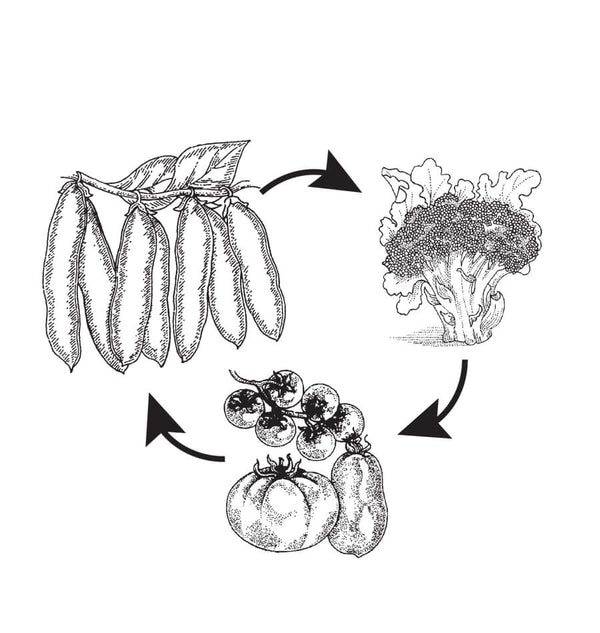Support Food Banks Canada with every dollar spent — 15% sales donated from Black Friday to Cyber Monday.
Time remaining:
Time remaining:

Crop rotation is the practice of not growing plants where similar plants grew the previous year. Crop rotation prevents the build up of pests and diseases and optimizes the use of soil nutrients. Plants from different “families” need different amounts of...
Continue ReadingThe weather outdoors is cold and gloomy. Here on the coast it is altogether wet — the ground is sodden and squishy. Elsewhere, the first blankets of snow are falling, and the ground is freezing hard. Only the most spirited...
Continue ReadingWhy limit your garden’s production to just the summer? There are still lots of seeds to start in July, particularly in regions with mild winters. Many of these varieties can be enjoyed as mature plants for fall and winter harvests,...
Continue ReadingSome vegetable varieties thrive in the cool conditions of fall and early winter, and offered a bit of protection from extreme cold, they can be harvested right through until spring. The best winter gardening varieties actually improve in flavour, texture,...
Continue ReadingAs far as the calendar is concerned, spring is half over, despite the sense for many of us in 2017 that is yet to begin! There are still dozens of seeds to start in May. It can still be cold...
Continue ReadingThe last average frost date for south coastal British Columbia is March 28. March is the month gardeners in this region must use to get ready to take full advantage of the growing season ahead. Gardeners in other regions can refer...
Continue ReadingWest Coast Seeds has conducted significant research into the companion planting guidelines and has defined the best possible results and reasons for each of our recommendations in our companion planting chart, below are a few thoughtful suggestions for you while planning your garden this year.
Continue ReadingThe holidays are over but the weather outside is still pretty frightful. Here on the coast it is altogether wet — the ground is sodden and squishy. Elsewhere, snow is falling, and the ground is freezing hard. Only the most spirited...
Continue ReadingNow we’re just three weeks away from the longest day of the year (summer solstice on June 21st), so the soil is warm enough to plant squash and bean seeds. Even in colder climates where the nights are still frosty,...
Continue ReadingLast summer I planted a few rows of fall and winter harvest leeks in our demonstration beds at Kirkland House here in Ladner. We chose the varieties described as “winter harvest” since they are bred to stand up to frost,...
Continue ReadingAlthough it’s still cold outside and the days are still short, there are many seeds to start in February indoors. The early start means your seedlings do some essential early development, and when they are transplanted outdoors in the spring,...
Continue ReadingWell it’s that time of year again… The 2018 Gardening Guide is out in the hands of many gardeners, and providing a glimmer of hope about the coming season. Winter is just about to commence (three more days from the...
Continue ReadingLeeks (Allium ampeloprasum, var. porrum, syn. A. porrum) This member of the Allium family is thought to have been in cultivation since the 2nd century BC, from ancient Egypt to Mesopotamia. The Romans believed that eating leeks imparted a sonorous...
Continue Reading